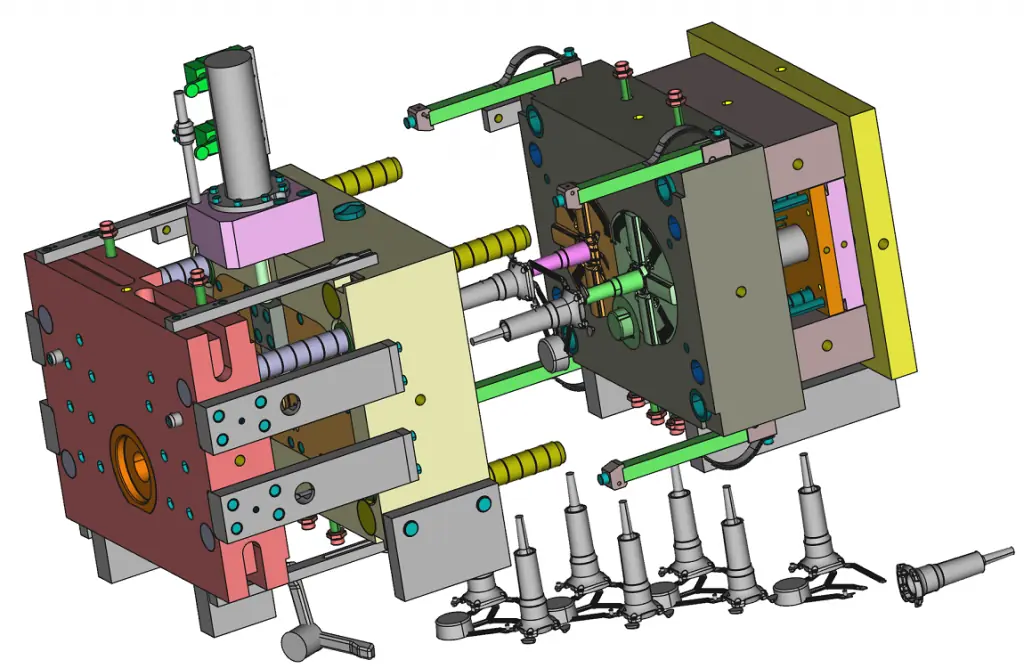In our last post on die casting, we discussed the importance of temperature on the die casting process. Heat, alloy material and technology are also other factors that can affect die-cast quality. Today however, we shall be discussing one of the first steps involved in die casting – Design.
In order to product the best quality die-cast parts, you will need to have a solid and functional design. This is because as soon as you have created your die and started the aluminium die casting process, there is very little you can do to make changes or correction. Because of this, the design process in arguably one of the most important phases.
The ultimate goal of any die casting process is to fabricate castings that will maximize the functionality of the product. Another goal is also to ensure that the castings are suitable for high volume manufacturing process, promoting speed and efficiency with minimal chances of defects. In order to attain these goals, here are some solid design tips you will need to keep at the top of your mind!
Uniformity
Perhaps the most important design factor, uniformity is utmost importance when designing for a die-cast run. Aim to create a uniform wall thickness around the casting and while you may not attain 100 percent perfection, you should strive to minimize the variations in the wall thickness.
Having inconsistent wall thickness can cause you to have different cooling rates along casting wall. This in turn can create a lot of problems such as differences in sizes and dimensions of your parts.
Having same side die dimensions will help you require lesser operations to meet tolerances. You will also get a higher quality product with better metal flow by ensuring uniform metal thickness and find that your die-cast process is more cost-effective.
Don’t cut corners
Try as much as possible to make the outside and inside radii corners of your casting generous enough. This will help the quality of your job by ensuring that you do not have to deal with quality issues such as reducing degradation of the die steel in these areas. You will also benefit with a product with enhanced metal flow, better components and ease of finishing touches.
Use Pockets, Ribs and Bosses
Pockets, Ribs and Bosses are excellent inclusions in die-cast designs especially when used strategically and efficiently. Where possible, use bosses and ribs in your casting design to add strength to the finished parts and do away with sharp corners. You can also use air pockets or metal savers to thin cross sections and make your metal lighter without compromising structural integrity. Pockets serve as excellent alternatives to using metals when you need a lightweight part.
Taper properly
Tapering is important for accessing and removing the casting from die. When we are dealing with die casting, we may also refer to this as creating a draft. Drafts are important as designing casts without them will often result in difficulties removing the die. When designing your die casting, you will need to ensure that the taper the inside walls of your die are more than those outside. This is because solidification of the alloy will cause the alloy to shrink and fit tighter on the casting on the inside. Making provision for this means that you are still able to remove you die easily even when the alloy has solidified.
Avoid undercuts
As much as possible, avoid undercuts.
Having undercuts in your part designs means that your die cast mold will not fit nor work as planned. Undercuts also arises the need for a slide, which will cause you to spend more time and money on the casting.
Die Casting Excellence
With many years of combined professional experience and a wide array of reputable clients, First Part has provided high-quality metal fabrication, CNC machining and Die casting services to local and international industries. Our die cast and CNC expertise is unmatched from design to costing and production. Our quality control and assurance department is dedicated to ensuring that we cast only the highest-quality parts for any application you may have need for at all times. To find out more about our services and die casting process, please have a view our website: www.firstpart.com










